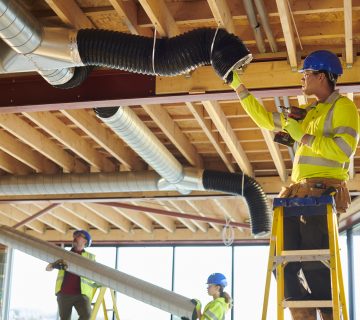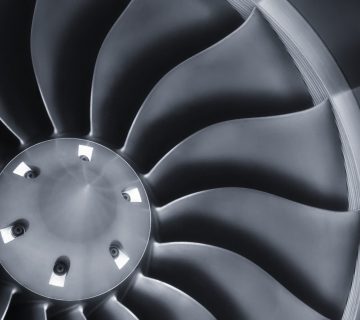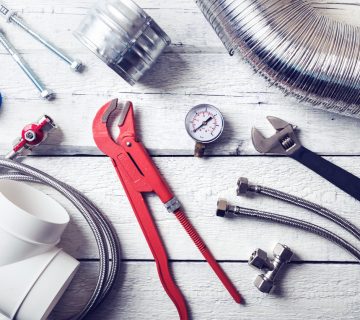Table of Contents
Ensuring optimal fan performance is crucial for HVAC installers, as it directly impacts system efficiency, energy consumption, and indoor air quality. Proper testing during and after installation verifies that fans meet design specifications and operate reliably. This comprehensive guide outlines essential tools and techniques for accurate fan performance testing, enabling installers to deliver superior HVAC solutions.
1. Anemometers: Measuring Air Velocity
Anemometers are indispensable tools for measuring airspeed at fan inlets and outlets. They come in various types, including vane and hot-wire anemometers. By capturing precise air velocity data, installers can determine if the fan delivers the required airflow rates, ensuring optimal performance. Regular use of anemometers helps in identifying deviations from expected performance, allowing for timely adjustments.
2. Manometers: Monitoring Pressure Differences
Manometers measure static and dynamic pressure within ductwork and across fans. Understanding these pressure differences is vital for evaluating fan efficiency and identifying potential airflow restrictions or system imbalances. Installers use manometers to ensure that pressure levels align with design specifications, which is essential for maintaining system performance and energy efficiency.
3. Flow Hoods: Assessing Air Volume
Flow hoods, also known as balometers, are devices placed over diffusers or grilles to measure the volume of air being delivered. This tool is crucial for balancing HVAC systems and confirming that each zone receives the appropriate airflow. Accurate air volume measurements help in optimizing comfort levels and ensuring compliance with design requirements.
4. Tachometers: Verifying Rotational Speed
Tachometers are instruments that measure the rotational speed (RPM) of fan motors. Ensuring the motor operates at the correct speed is essential for achieving desired airflow and maintaining system efficiency. Deviations in motor speed can lead to inadequate ventilation or excessive energy consumption, making tachometer readings a critical aspect of performance testing.
5. Sound Level Meters: Evaluating Noise Levels
Excessive noise from HVAC systems can indicate issues such as imbalance, mechanical wear, or improper installation. Sound level meters help assess the acoustic performance of fans, ensuring they operate within acceptable noise thresholds for comfort and compliance. Monitoring noise levels is also essential for maintaining a pleasant indoor environment and adhering to noise regulations.
6. Vibration Analyzers: Detecting Imbalances
Vibration analyzers are used to identify imbalances or misalignments in fan assemblies. Addressing these issues promptly can prevent premature wear, reduce noise, and extend the lifespan of the equipment. Regular vibration analysis helps in maintaining system reliability and avoiding costly repairs due to mechanical failures.
7. Pitot Tubes: Measuring Airflow in Ducts
Pitot tubes are devices used to measure fluid flow velocity, and in HVAC applications, they help determine airflow within ducts. By measuring the difference between static and dynamic pressure, installers can calculate the velocity and, subsequently, the airflow rate. This technique is essential for verifying that the system delivers the designed airflow, ensuring proper ventilation and comfort.
8. Smoke Pencils: Visualizing Airflow Patterns
Smoke pencils emit a thin stream of smoke, allowing installers to visualize airflow patterns around fans and within ducts. This technique helps identify leaks, obstructions, or turbulent flow areas that could affect system performance. By observing the smoke’s movement, installers can make necessary adjustments to optimize airflow and ensure efficient operation.
9. Thermo-Anemometers: Combining Temperature and Velocity Measurements
Thermo-anemometers are versatile tools that measure both air velocity and temperature simultaneously. This dual functionality is beneficial for assessing thermal comfort and ensuring that HVAC systems provide adequate heating or cooling. By analyzing both parameters, installers can fine-tune systems to achieve optimal indoor conditions.
10. Data Loggers: Monitoring Performance Over Time
Data loggers are electronic devices that record parameters such as temperature, humidity, pressure, and airflow over time. Deploying data loggers allows installers to monitor fan performance continuously, identify trends, and detect anomalies that may indicate emerging issues. This proactive approach facilitates preventive maintenance and enhances system reliability.
Adhering to AMCA Standards
The Air Movement and Control Association (AMCA) provides standardized methods for testing fan performance. Compliance with AMCA standards ensures consistency and reliability in test results, facilitating accurate performance assessments. AMCA’s Certified Ratings Program (CRP) allows manufacturers to obtain an AMCA Seal when their equipment has been tested and rated according to recognized test standards. For HVAC installers, familiarity with AMCA standards and certifications is essential for selecting quality equipment and conducting reliable performance evaluations.
Implementing a Comprehensive Testing Protocol
To ensure accurate fan performance testing, HVAC installers should implement a comprehensive testing protocol that includes the following steps:
- Pre-Installation Assessment: Review design specifications and select fans that meet the required performance criteria. Verify that the installation site is prepared appropriately.
- Installation Verification: Ensure that fans are installed according to manufacturer guidelines and industry best practices. Check for proper alignment, secure mounting, and correct electrical connections.
- Initial Performance Testing: Utilize the tools and techniques outlined above to conduct initial performance tests. Record baseline data for airflow, pressure, noise, vibration, and motor speed.
- System Balancing: Adjust dampers, fan speeds, and other control devices to achieve balanced airflow throughout the system. Confirm that all zones receive the designed airflow rates.
- Documentation: Maintain detailed records of all test results, adjustments made, and any issues encountered. Proper documentation is essential for future maintenance and troubleshooting.
- Post-Installation Monitoring: Implement data loggers or building management systems to monitor fan performance over time. Regularly review performance data to identify and address any deviations promptly.
By following this comprehensive approach and employing the appropriate tools and techniques, HVAC installers can ensure that fans operate efficiently, meet design specifications, and provide optimal comfort in both residential and commercial settings.
At EDI HVAC, we offer a wide range of high-quality HVAC fans and expert support to help you achieve the best performance for your system. Contact us today to learn more about our products and solutions.




